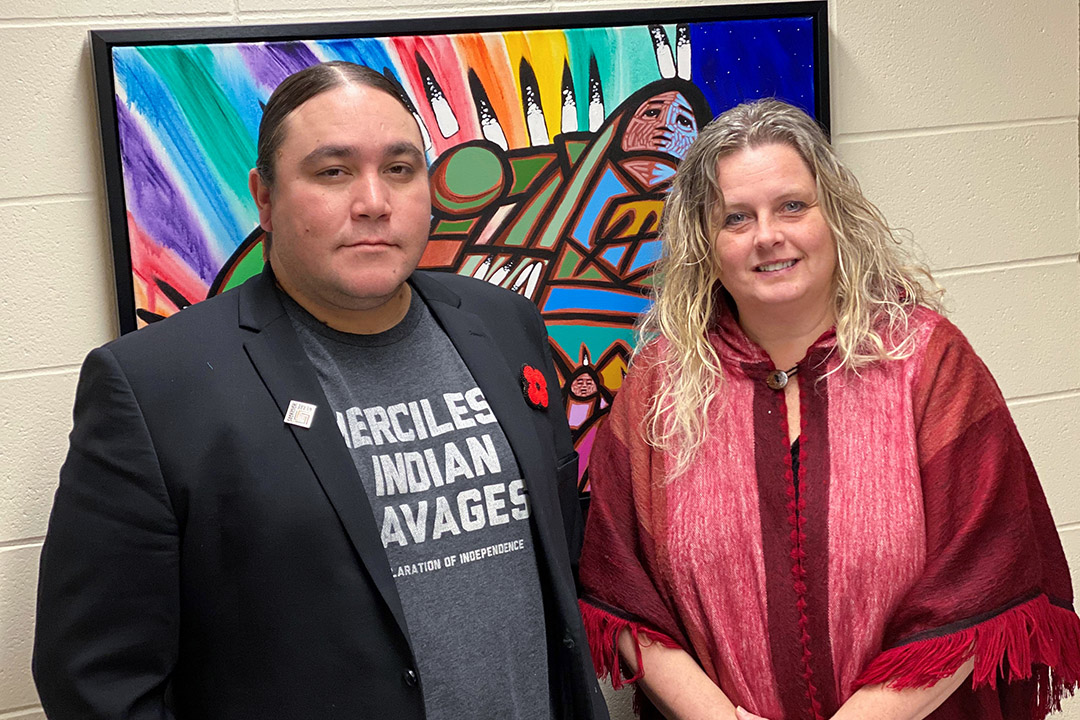
Wāhkōhtowin model enhances teacher training
When Chris Scribe and Dr. Dawn Wallin (PhD) were reviewing the evaluation committee comments on their successful Social Sciences and Humanities Research Council (SSHRC) Insight Grant application, it reaffirmed what they already knew to be true: the College of Education and partners’ efforts to decolonize teacher education were unique in North America.
By Meagan Hinther“We’re working to give our students field experiences in professional development schools with an Indigenous focus, right from the ground up,” said Scribe, director of the college’s Indian Teacher Education Program (ITEP) at the University of Saskatchewan. “This is something that people in the research community are taking note of.”
ITEP has always had a strong reputation for community-based and on-campus education. Since 2016, students in the program have been enrolling in professional development (PD) schools across the city and at Kakhewistahaw First Nation. PD schools are common throughout North America and are built from university partnerships with school divisions to achieve professional education in the context of practice.
What is not common in the PD school model, however, is an Indigenous focus within teacher training.
“We brought well-respected Cree Elders and Knowledge Keepers from all over Saskatchewan together and we talked about what our steps should be to give our students strong field experiences,” said Scribe.
What developed from those conversations and ceremony was an education model with an Indigenous worldview embedded within, named Wāhkōhtowin. The main theme of the Nēhiyaw model is relationship and kinship, using the visualization of a tipi. Each partner becomes a pole of the tipi that is tied together, reinforcing its strength.
ITEP teacher candidates learn alongside facilitators, mentors and Elders in PD schools that foster their development.
“Through Wāhkōhtowin, we’re trying to make the link between theory and practice so that it becomes a seamless part of teacher education, coursework and professional growth,” explained Wallin, associate dean, undergraduate programs, partnerships and research in the College of Education. “Students are practicing what they learn directly in a school and they get to reflect in the moment and bring it all together. Students start seeing their program as a continuum of learning.”
The Wāhkōhtowin partnership began with ITEP, Greater Saskatoon Catholic Schools and Saskatoon Tribal Council. It grew over time to include Saskatoon Public Schools and Kakhewistahaw First Nation. As the model began having success in teacher candidate training and student and partner responses, Scribe and Wallin started looking for ways to support research on the model.
“When you have something that no one is doing and it’s good and it’s valuable for Indigenous people, you need to put the research down,” said Scribe. “That’s where the fire was started for us to get research funding.”
Their funding application to SSHRC was successful, and awarded $365,097 to support the Wāhkōhtowin model’s emphasis on culturally responsive teacher education, and its work to improve educational outcomes for Indigenous learners.
“Often one thing that gets lost in recognition of knowledge sharing is remuneration for Elders. Elders’ knowledge is crucial to Wāhkōhtowin,” said Wallin. “This research funding makes sure that Indigenous perspectives become an integral means of shaping the data collection.”
“It demonstrates to our Elders and Knowledge Keepers that their knowledge is being appreciated,” added Scribe. “We like to talk about Indigenization, but when push comes to shove, often it’s the Indigenous knowledges that need to fit into Western paradigms. “Through this research, we are trying to push those boundaries and those paradigms and shift that perspective to make the Western paradigms fit into Indigenous knowledge systems.”
Through its Indigenous and student-centred approach, the Wāhkōhtowin model is changing teacher training for the future.

